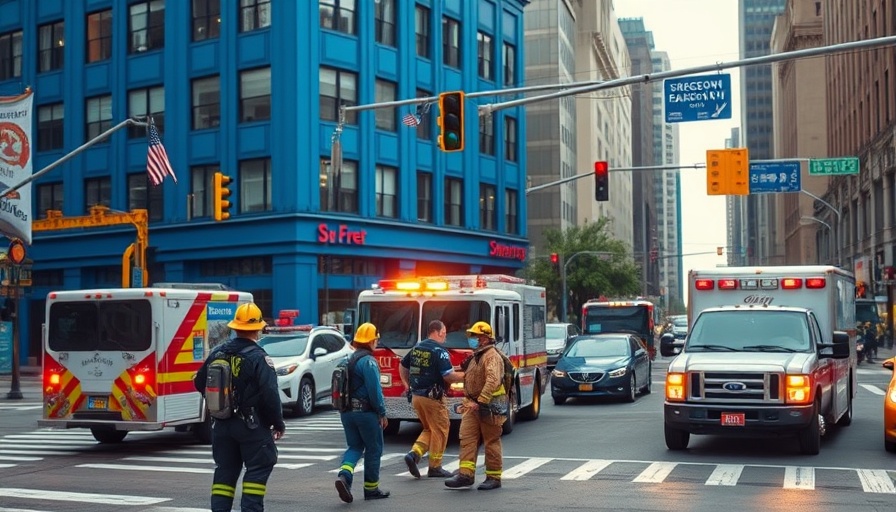
The Unfolding Crisis at 16th Street Plaza
On June 16, a harrowing scene unfolded at the busy intersection of 15th and Mission streets in San Francisco's 16th Street Plaza when a man was discovered unconscious, suspected of overdosing. Emergency responders quickly intervened, but it took a community united by urgency to save his life. This incident underscores a growing concern in urban areas, especially as public spaces become sites of both social interaction and crisis.
Community Response: A Story of Quick Action
Witnessing a potential overdose triggered an immediate response from local bystanders, notably Geno G., a Public Works employee. After realizing that the man was face up, unconscious, and turning blue, he urgently called for Narcan—a medication designed to rapidly reverse opioid overdoses. Despite the sea of people surrounding him, relief was hard to come by until three individuals rushed in with Narcan. Geno recounted to reporters, "Five people I've watched turn blue, look dead and come back to life." This sentiment illustrates not only the perils present in the area but also the indomitable spirit of the community.
The Emotional Weight of Response
The emotions at the scene were palpable as those rushing to help were not just passive observers but individuals deeply affected by the consequences of drug use in the neighborhood. Justice Jones, a local activist, expressed regret for his initial hesitation and shared how he felt compelled to act, reflecting a growing sense of urgency among residents to confront the addiction epidemic head-on. High overdose rates have instilled a mix of fear and resilience in this community, demanding action beyond individual incidents.
Looking at the Bigger Picture: The Need for Systemic Solutions
While the swift response of bystanders and emergency personnel highlights the power of community, it also raises critical questions about the underlying factors contributing to substance abuse in San Francisco. The prevalence of drug use and overdoses in public spaces points to systemic issues such as inadequate mental health resources, lack of affordable housing, and overburdened public services. Jones argues, "The community is owed an apology from the city," suggesting that it is not just individual actions that are needed, but rather a robust framework for addressing these issues.
Opportunities for Community Engagement
In light of this troubling event, community initiatives could play a vital role in addressing public safety concerns. As residents appeal for more support, strategies such as organizing community clean-ups, providing addiction recovery workshops, and advocating for improved local policies can foster communal ties. Local businesses can also engage by sponsoring awareness campaigns aimed at educating people about drug use and available resources.
Future Directions: How Policy Can Make a Difference
The role of local government is crucial in shaping the response to these crises. City council decisions on public safety initiatives and health services funding can greatly impact the community's well-being. Policymakers need to collaborate with community organizations to create comprehensive strategies that prioritize preventive care and addiction support services. Practical measures such as expanding access to rehabilitation programs and securing funding for mental health resources are essential to mitigate future crises.
Join the Movement: Supporting Local Journalism
The urgency to improve community health and safety is apparent, but the path forward requires awareness and engagement from the public. Local journalism plays a critical role in shedding light on these issues. As Mission Local seeks to amplify voices and concerns from the community, every contribution—from readers and locals alike—can aid in crafting a more informed and proactive narrative. Support your local newsroom to ensure vital stories like these continue to be told, and advocate for safer communities everywhere.
 Add Row
Add Row  Add
Add 




 Add Row
Add Row  Add
Add 

Write A Comment